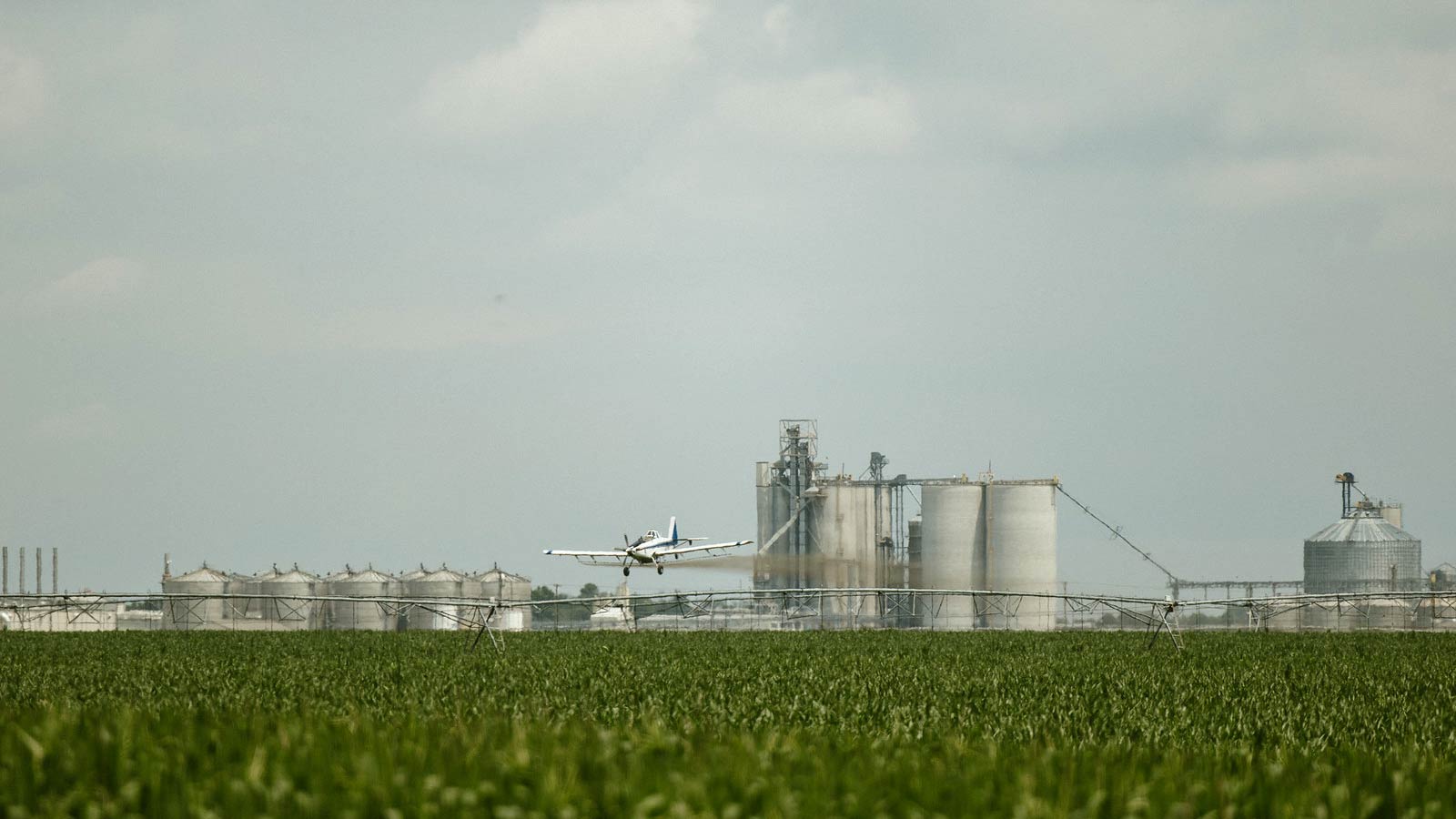As farmers grow and raise the food we eat, they also work to keep the natural environment as untouched as possible. One of the most important ways they do this is by protecting local rivers, lakes and other sources of water from fertilizer and other agricultural runoff. While the ingredients found in fertilizers and pesticides improves crop production, it can also potentially and adversely affect plants and animals. By actively keeping runoff out of local waterways, farmers continue to be effective stewards of the land.
Through a combination of preventive measures and active management, farmers minimize or eliminate the effects of runoff on the environment. This benefits the local ecosystems, but it also benefits the farmers and eventual consumers. The more nutrients and fertilizer that remain in the field and available for the crop, the more farmers save on replacing them, helping keep costs down.
What Is Agricultural Runoff?
Water is a crucial part of every farm. From natural rainfall to irrigation, to water used for maintenance tasks, it’s vital to keep farms clean and productive. But the soil and plants can only absorb so much. Some of the excess water flows down and away from the farm itself, and over time it can collect foreign substances and debris. It may contain materials like sediment, fertilizer nutrients and pesticides. This is what is broadly referred to as runoff, and it’s not limited to farms. Runoff can come from residential lawns and nonagricultural commercial properties as well.
When this water reaches local rivers, streams and lakes, it can alter the ecosystem in a variety of ways.

How Farmers Use These Seven Strategies to Minimize Agricultural Runoff
The best way to manage runoff is a two-pronged approach: active management that works to reduce the runoff at or approaching rivers and lakes, and preventive steps that minimize the amount of runoff overall. Farmers have been at the forefront of developing these innovative strategies thanks to their deep understanding of the land.
- Adding/Maintaining Conservation Field Buffers
Farmers regularly plant shrubs, trees and a wide range of other plants that form a protective barrier between farms and natural waterways. These buffer plants absorb or filter out more of the runoff water before it reaches the river or lake. - Adding Protective Fencing Along Waterways
Like us, animals needs water to survive, but hooves can stomp down banks and shorelines or create easier paths for runoff water to follow. In addition, animals drinking water with runoff in it may get sick. Farmers install fencing along waterways to both protect their animals as well as conserve the waterway for local wildlife. Limiting their access to water with fencing can protect both domestic and wild animals. - Reducing or Minimizing Tillage
Loose, tilled soil is easier for water to penetrate. The soil itself can also make its way to the water. Tilling less often, like with no-till practices, keeps more of the soil in place. - Planting Cover Crops
Like buffers or filter strips, cover crops can maintain soil structure and hold onto nutrients for longer. But while buffer planting keeps runoff from getting to the water source, cover crops reduce how much runoff is produced initially. Cover crops can keep precious nutrients like nitrogen and phosphorus in the fields long enough for the next planting of crops. And they can also help improve soil health. - Incorporating Water Management Plans
Water management plans help establish guidelines for the most efficient use and conservation of water. These plans can be individualized for each farmer or be part of a larger, more collaborative program for an entire region. - Implementing Nutrient Management Plans
Nutrient management plans seek to balance out when you apply fertilizer, how much is applied, what methods are used, and what land is fertilized the most. This is also known as the 4Rs, which stands for Right Source at the Right Rate and Right Time in the Right place. Farmers can even earn accreditation through the 4R Nutrient Stewardship Certification Program.Effective nutrient management plans also account for alternate sources of nutrients like manure. In many cases you can actually increase soil productivity while also reducing the amount of runoff produced. - Maintaining Their Own Water Sources
Some farmers place tanks in their pastures for use by crops and animals. Farmers can also rely on this clean water to limit erosion and prevent water runoff.
These Strategies Prevent Runoff from Affecting Local Ecosystems
The components found in key agricultural products may negatively affect plants, animals and even the soil. Farmers take active roles in managing runoff because of their strong connection to the land, and because a great deal of improvement can occur when strategies are correctly and widely applied. Through prevention and management techniques, higher levels of agricultural runoff are avoided, stopping many of these problems from appearing in the first place:
- Algae blooms – The nutrients in fertilizer can be a little too productive for many species of algae. Local colonies will suddenly explode in growth, which may outcompete native species or other plants important to the ecosystem.
- Spread of toxins – The components in agriculture products are poisonous to many organisms. Animals that drink this water or swim in it may become sick or may develop other health issues.
- Reduction of oxygen in water – As algae blooms begin to break down, the bacteria responsible for decomposition also deplete the oxygen in the water, a process known as eutrophication.
- Excess sediment – Too much dirt and minerals in the water can make it difficult for animals to find food. It can also change the shape of shorelines and riverbanks, which leads to cascading changes downstream.
Farmers Are Front-Line Fighters Against Runoff
Protecting the natural environment is one of most important parts of every farmers’ connection to the land. A healthier environment produces more higher quality crops while reducing the amount of effort needed in the field. Nebraska corn farmers are constantly innovating with new strategies and modifying or eliminating those with mixed results, finding what works best for their local soil and climate.




